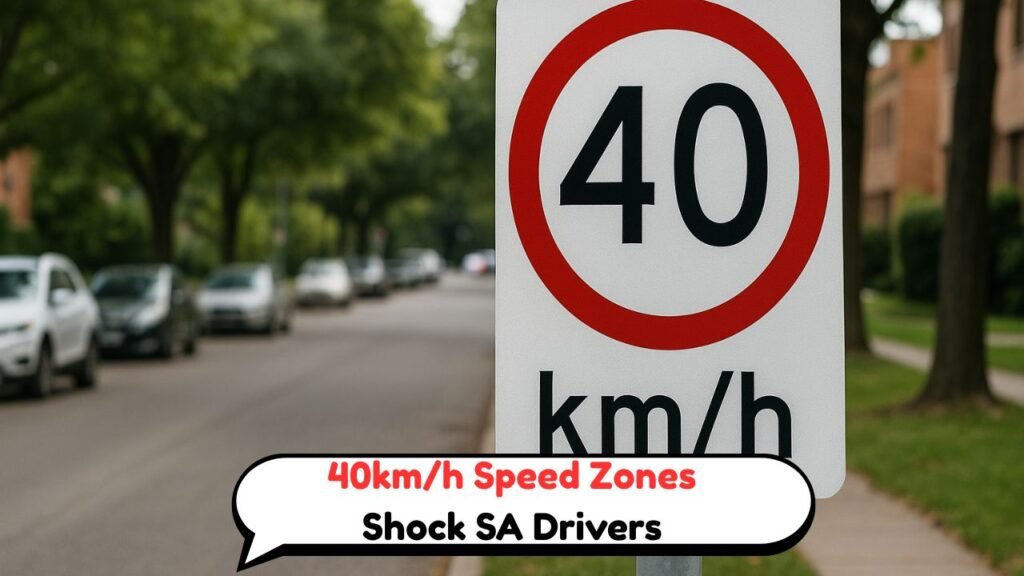October 2025 Traffic Law Overhaul: In a significant move aimed at enhancing road safety, the South African government is introducing new traffic regulations this October 2025, specifically focusing on the enforcement of 40km/h speed zones. This initiative is part of a broader strategy to reduce road accidents and fatalities, particularly in high-risk areas such as school zones and residential neighborhoods. Drivers across the country will need to adapt quickly to these changes or face stringent penalties. As these new measures come into effect, the emphasis will be on ensuring that motorists are aware and compliant with the updated speed limits. The changes have been prompted by an alarming rise in traffic incidents, calling for immediate action to safeguard both pedestrians and drivers.

Understanding the 40km/h Zones: What Drivers Need to Know
The introduction of 40km/h zones is a pivotal component of the October 2025 traffic law overhaul. These zones are strategically placed in areas with high pedestrian traffic, such as schools, parks, and residential streets, to maximize safety. The primary objective of these zones is to minimize the risk of accidents involving vulnerable road users, including children and the elderly. Studies have shown that lower speed limits significantly reduce the likelihood of severe injuries in the event of a collision. As drivers navigate these new regulations, it is crucial to remain vigilant for signage indicating the start and end of these zones. Moreover, law enforcement agencies will be increasing their presence in these areas to ensure compliance and provide guidance to drivers adjusting to the new rules.
Impact on Road Safety: How the New Traffic Laws Aim to Save Lives
The anticipated impact of the 40km/h speed limit is substantial, with authorities hopeful for a marked decrease in road-related accidents and fatalities. By reducing speed limits in crucial areas, the government aims to create a safer environment for all road users. The success of similar initiatives in other countries has demonstrated that lower speed limits not only save lives but also contribute to a more harmonious interaction between vehicles and pedestrians. The South African Department of Transport has conducted thorough research, which supports the effectiveness of such measures. To ensure the success of this initiative, public awareness campaigns are being rolled out to educate drivers on the importance of adhering to these limits and the potential consequences of non-compliance.
Compliance and Enforcement: Preparing for the Transition
With the October 2025 traffic law overhaul, enforcement measures will be a key focus to ensure that drivers comply with the new speed limits. Traffic officers will be equipped with advanced speed detection technology to monitor and enforce compliance effectively. In addition to traditional enforcement methods, the government is implementing automated speed cameras in strategic locations to capture and penalize speeding violations. Penalties for non-compliance will include hefty fines, demerit points, and potential suspension of driving licenses for repeat offenders. To facilitate a smooth transition, authorities are urging drivers to familiarize themselves with the new regulations and remain attentive to changes in speed limits. Community workshops and informational resources are being made available to assist drivers in understanding the implications of the new traffic laws.
Driver Awareness and Education: Key to Successful Implementation
Driver education and awareness are pivotal to the successful implementation of the traffic law changes. The government is investing in comprehensive educational campaigns to inform the public about the benefits and requirements of the new 40km/h zones. These campaigns aim to shift the mindset of drivers, encouraging them to prioritize safety over speed. Educational materials are being distributed through various channels, including social media, television, and community outreach programs. Furthermore, driving schools across the country are incorporating these changes into their curricula to ensure that new drivers are well-informed and prepared. By fostering a culture of safety and responsibility, the government hopes to achieve a long-term reduction in road accidents and create a safer environment for all South Africans.



